Encounter argentina's land of fire: ushuaia
Authentic South American Experiences For Your Clients Request A Quote
Named by the Portuguese explorer, Ferdinand Magellan in 1520, the Tierra del Fuego has long attracted travelers to this remote and ominously named, ‘Land of Fire’. Situated at the southern tip of South America, the archipelago of Tierra del Fuego has become known for its unique climate, wildlife and spectacular landscapes.
Ushuaia is the largest, and only, city on the evocatively named island of Tierra del Fuego, which translates into English as The Land of Fire. Ushuaia’s inhabitants claim that it is the most southerly city in the world and it really does feel like a distant outpost. Ushuaia is the last point of civilization before the frozen stretches of Antarctica take hold, and once-upon-a-time this island is where Argentina’s most dangerous prisoners were sent to pass their sentences doing hard labor in the bitterly cold conditions of Patagonia. It was Tierra del Fuego’s prisoners who actually built the city of Ushuaia, and today it is an attractive and colorfully painted coastal town, where thousands of people visit every year (of their own free will!) to see the beautiful landscapes and national parks of Southern Patagonia.
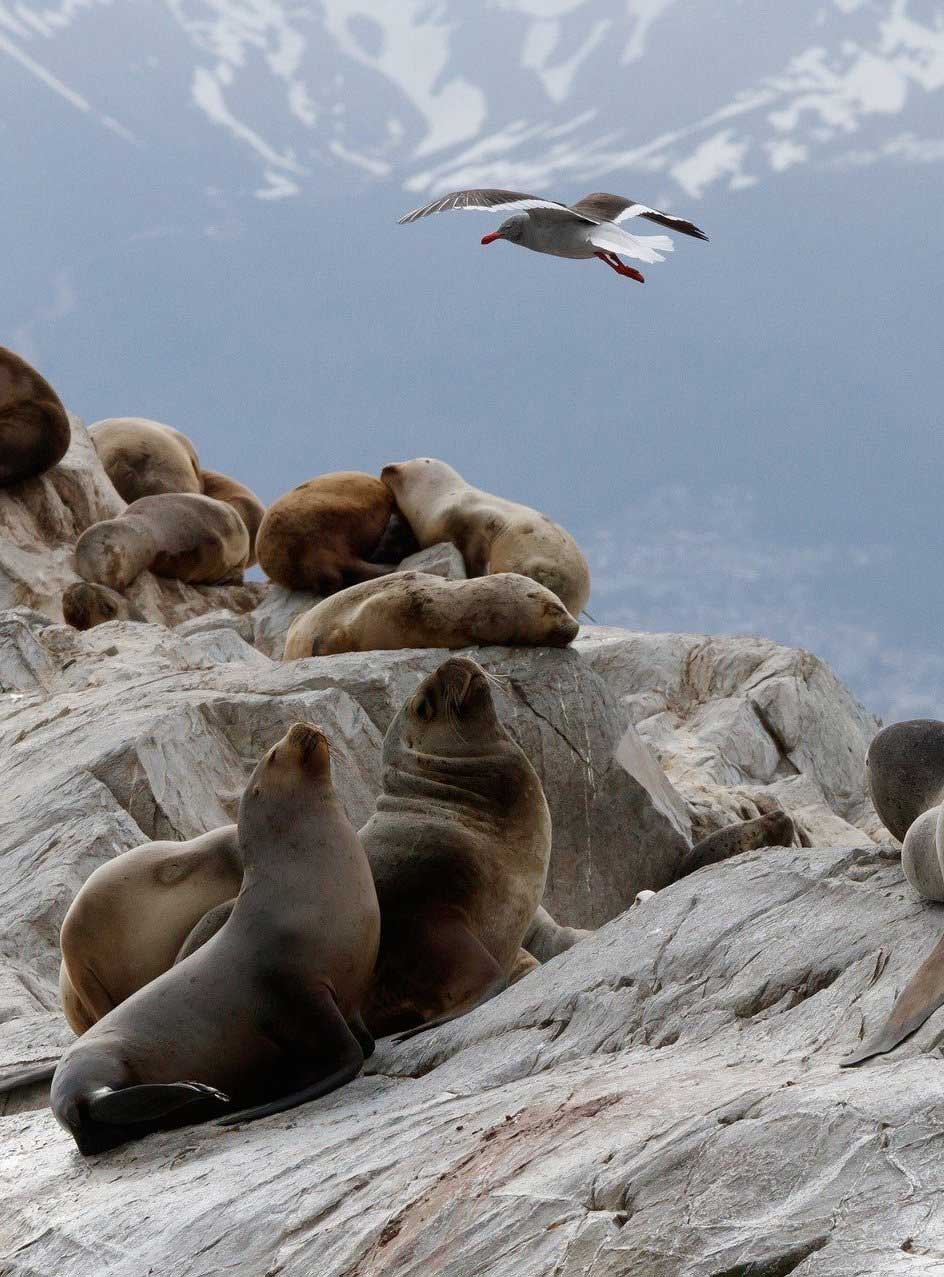
USHUAIA AND THE LAND OF FIRE
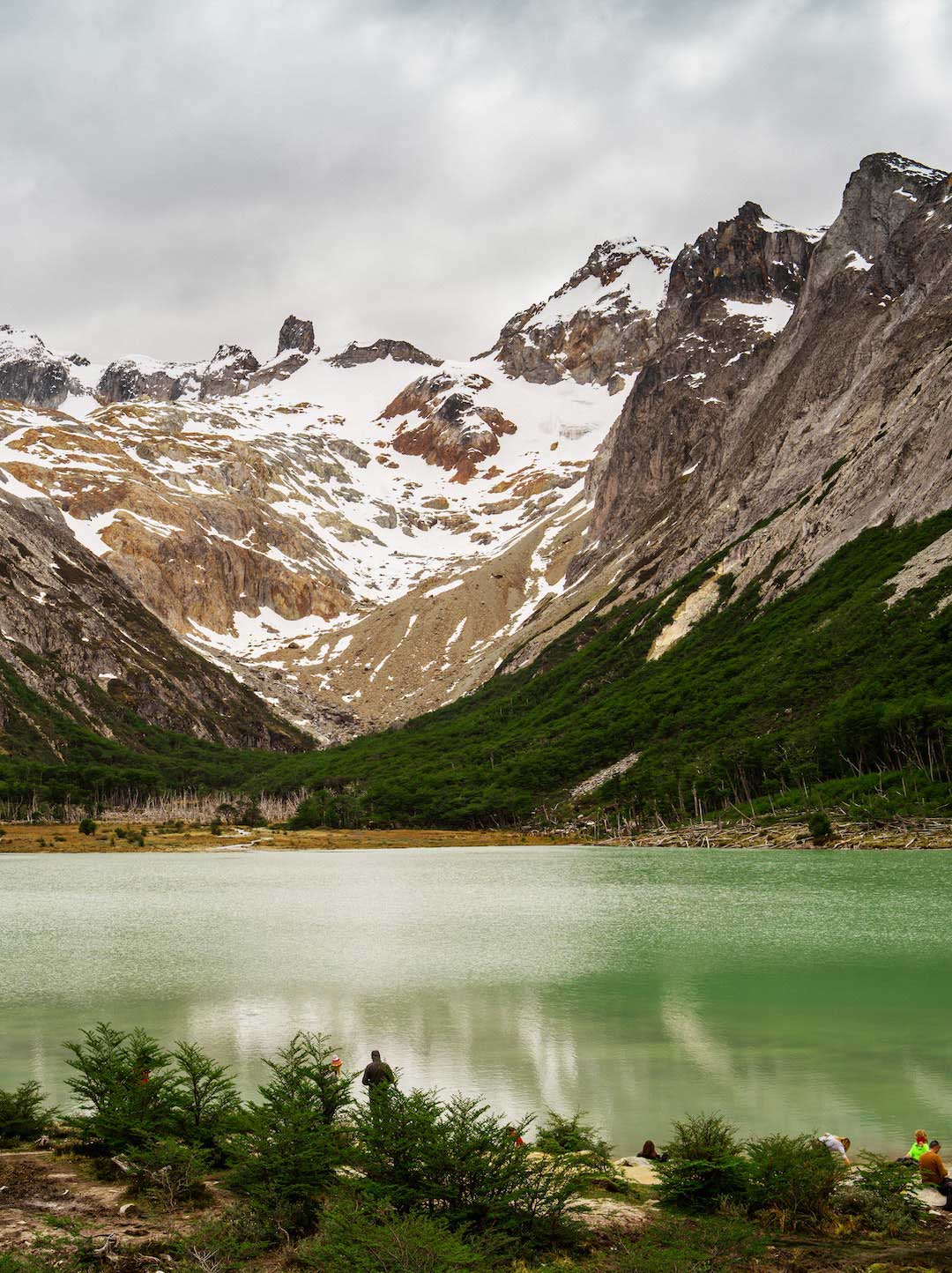
The town itself is a jumbled and growing collection of steep streets lined up on the coastal stretch of land between the beautiful Martial Mountains and the Beagle Channel. It is almost 100% focused on tourism and, though somewhat pricey, the services and general standards in Ushuaia are correspondingly high. You’ll find excellent hotels and restaurants and some delicious locally-brewed beers. In a place quite so open to the elements, the comfort of a warm hearth and good food and drink are extremely welcome, especially so as the main draw of Ushuaia is getting out into the elements and enjoying its stunning surroundings. Adventure activities include hiking, biking, kayaking, boating and skiing, so a roaring fire and a hearty dinner to come home to are key.
build your clients trip with our experts

WHAT NOT TO MISS IN USHUAIA
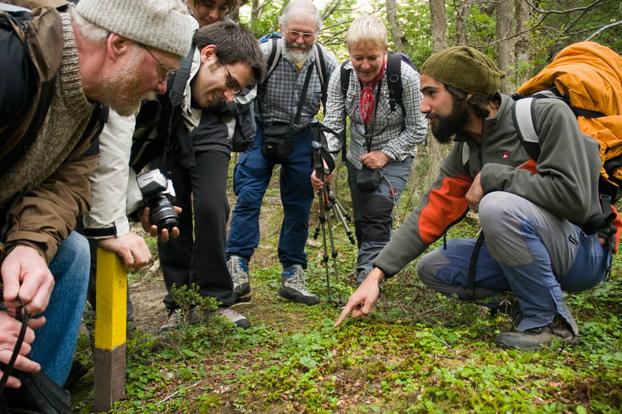
Tierra del Fuego National Park
This national park’s beauty is captivating and includes jagged mountains, sub-Antarctic tundra, swathes of beech forests, and icy lakes. Wildlife consists of condors, geese, and grey foxes, and the wide range of hiking trails are, mostly, easy to manage. It has a strange and desolate beauty, which is quite captivating. The best way to explore the park is on foot and taking your time.
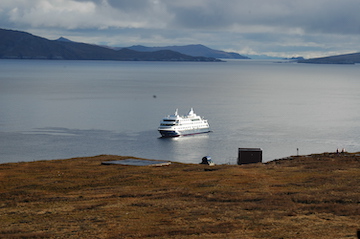
Beagel Channel
The Beagle Channel is a strait separating the main island of Tierra del Fuego from various other small islands. It is one of three navigable routes linking the Atlantic and Pacific Oceans at the southern tip of the South American continent. Many of the region’s native animals can be observed, including sea-lions, seals, penguins, and occasionally minke whales.
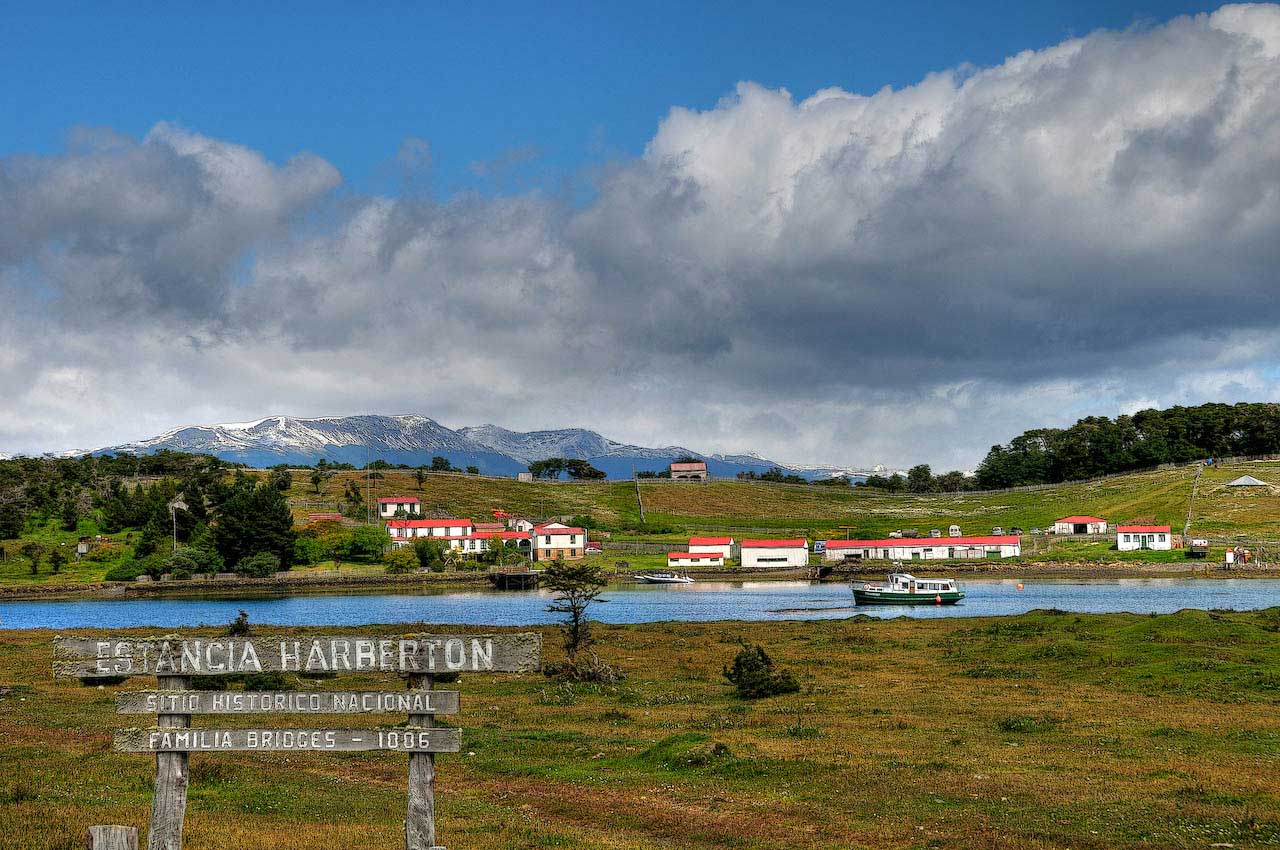
Estancia Harberton
The estancia served as a sanctuary for shipwrecked sailors as well as the Yámana and other indigenous peoples of the area. Bridges wrote the famous English-Yámana dictionary, one of the only historical records of this once thriving society. As well as having great historical importance, the estancia has an impressive marine mammal museum.
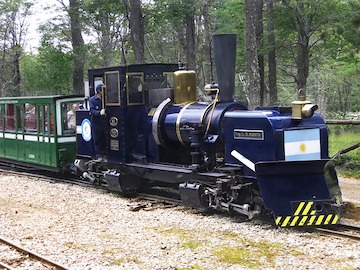
End of the world train
An alternative way to reach Tierra del Fuego National Park is taking the Train of the End of the World. It was originally built as a freight line to serve the prison of Ushuaia, specifically to transport timber. It now operates as a heritage railway and is considered the southernmost functioning railway in the world.

Lakes Escondido and Fagnano
You may think it’s a painting or the scenery from an adventure movie, but it isn’t…once you get to the lakes of Escondido and Fagnano, you will soon discover that perfect panoramic views do exist! Situated 37 miles (60km) away from the Ushuaia, Lake Escondido seems to be part of a dream in the middle of the mountains.
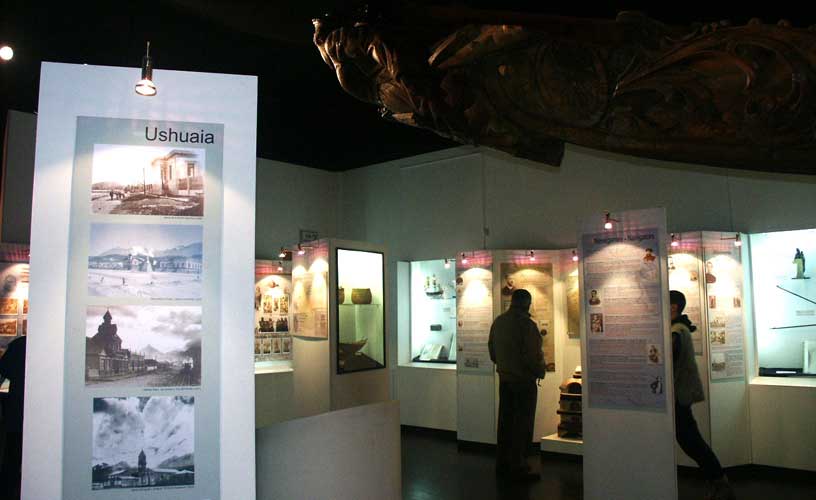
End of the World Museum
The Museo del Fin del Mundo holds a remarkable collection of pieces from the first expeditions and the indigenous people who inhabited these coasts. It’s located on the corner of Maipú and Rivadavia Streets, operated until 1976, opening in 1979 and has preserved the historical roots of the island ever since.
destination map

| Title | Address | Description |
|---|---|---|
Buenos Aires | Buenos Aires, CABA, Argentina | Argentina’s cultured capital, is many people’s favorite city in Latin America. With its thriving arts and music scene, feisty Latin character, fascinating history and, stunning architecture; the city is filled with a rich past and an equally as captivating present…Read more… |
Patagonia Glacier National Park | Parque Nacional Los Glaciares, Santa Cruz, Argentina | This UNESCO World Heritage Site has some of the region’s most dramatic scenery. Embark on a boat trip passing shimmering icebergs or, hike across the mighty Perito Moreno Glacier in South America’s kingdom of ice and glaciers! Read more… |
Iguazu Falls (Puerto Iguazu) | Unnamed Road, Misiones, Argentina | Named one of the New 7 Wonders of the World, Iguazu hosts over 250 separate falls thundering down from heights of up to 269ft. (82m), a truly inspiring experience. These giant falls can be visited from both Argentina and Brazil, both offering their own unique perspective.Read more… |
Peninsula Valdes | Península Valdés, Chubut, Argentina | This area of Patagonia is haven for a whole host of marine wildlife and birdlife. Its sheltered bays offer a safe breeding and feeding ground for fascinating wildlife, including sea lions, elephant seals, penguins, dolphins and, most impressively of all, the giant Southern Right Whale.Read more… |
Ushuaia | Ushuaia, Tierra del Fuego, Argentina | The last point of civilization before the frozen stretches of Antarctica take hold, Ushuaia is an attractive and colorful coastal town at the end of the world. Be spoiled by its surrounding beautiful landscapes and the vast National Parks of Southern Patagonia. Read more… |
Mendoza | Mendoza, Capital, Mendoza, Argentina | This corner of the world is the perfect climate for wine growing, especially the Malbec grape. You won’t want to miss at least a few days visiting some speciality boutique vineyards, or more renown brands. There’s also plenty of adventure outdoor activities abound.Read more… |
Salta | Salta, Argentina | Salta’s attractive colonial architecture effortlessly lives up to its nickname, La Linda, meaning ‘the beautiful’ in Spanish. It’s without a doubt one of the most well-preserved colonial cities in Argentina and the perfect base to visit the rest of northwest highlights of Jujuy & Cafayate.Read more… |
Jujuy Province | San Salvador de Jujuy, Jujuy, Argentina | Jujuy Province (pronounced hu-hui) has some of the most stunning landscapes in all of Argentina. One day’s drive will take you through 400 year old cacti forests, beautifully preserved colonial villages, expansive salt flats and rocky mountain faces swirled with a rainbow of colors.Read more… |
Cafayate | Cafayate, Salta, Argentina | Home to the Torrontes vineyards, Cafayate is unique in its production of a refreshingly light white wine. This charming colonial town has a lovely laid-back and small-town feel with a pleasant central plaza where you can dine al fresco on regional specialties.Read more… |
Lake District & Bariloche | San Carlos de Bariloche, Río Negro, Argentina | Salta’s attractive colonial architecture effortlessly lives up to its nickname, La Linda, meaning ‘the beautiful’ in Spanish. It’s without a doubt one of the most well-preserved colonial cities in Argentina and the perfect base to visit the rest of northwest highlights of Jujuy & Cafayate.Read more… |
Depending on your client’s preferences, we can help you determine the best experiences tailored for your clients. From where to visit, when to go, what to do and how to get there safely, our travel experts will help you create an experience your clients will love.
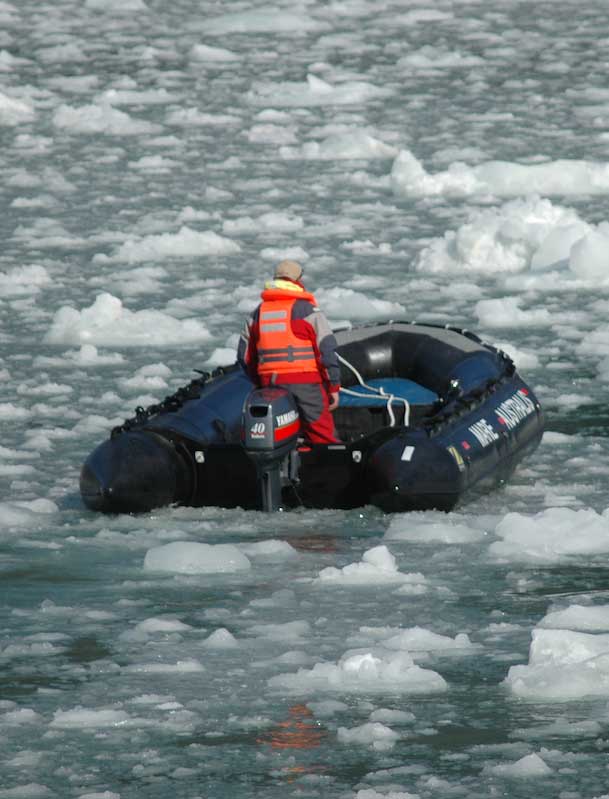
Best times to
visit USHUAIA
Argentina has reverse seasons to the Northern Hemisphere, with summer beginning in December and winter getting started in earnest in June. Being that it is so far south, the island of Tierra del Fuego experiences especially fierce winters, with icy winds, freezing rain and lashings of sleet and snow. Though you can go skiing in this season, the harsh winter weather makes it much more of a challenge to get out into the elements and see the countryside. It is much better to visit Ushuaia during the spring, summer and fall, when the skies clear and the temperature rises (a little!). During the fall, the beech trees turn a fiery orange, adding to the beauty of the island. The busiest time for visitors is during Argentina’s summer holidays, from the end of December through to mid-January.

practical information
HOW TO GET THERE
The International Airport Islas Malvinas, open since 1998, receives daily flights from Buenos Aires and other southern cities, such as El Calafate, Río Gallegos, Puerto Madryn, Trelew, and Comodoro Rivadavia. Airplanes also fly from Chilean cities, like Santiago, Puerto Montt and Punta Arenas.
Getting there by bus is also possible. However, you should take into account that distances are quite long, so trips from the above mentioned cities may last approximately one day or more. Arriving by car is another alternative. Car rental outlets are available in Ushuaia to pick up or return vehicles.
Another way of reaching Ushuaia is in one of the almost 80 cruises that stop there every week during the summer season, before heading towards Antarctica.
GETTING AROUND
If you’re staying in the center of Ushuaia, be sure to just walk. You’ll be able to soak up the beautiful views across the water from the center of the city, see some interesting buildings and enjoy a number of pedestrian-only zones.
Buses do run throughout Ushuaia but only a few reach the main tourist sites. They are however good to get to Playa Larga or, from one part of the center to the other.
Taxis are cheap, safe, and the drivers will often provide you with information on the surrounding region and local recommendations on their favorite restaurants in the city.
WHERE TO STAY
There are a variety of hotels, inns and B&B’s available in the city, with a wide range of prices and level. Cabins and lodges in the outskirts are also a good option for those who want to be in direct contact with nature, or closer to the Cerro Castor resort, which also has its own ski lodge.
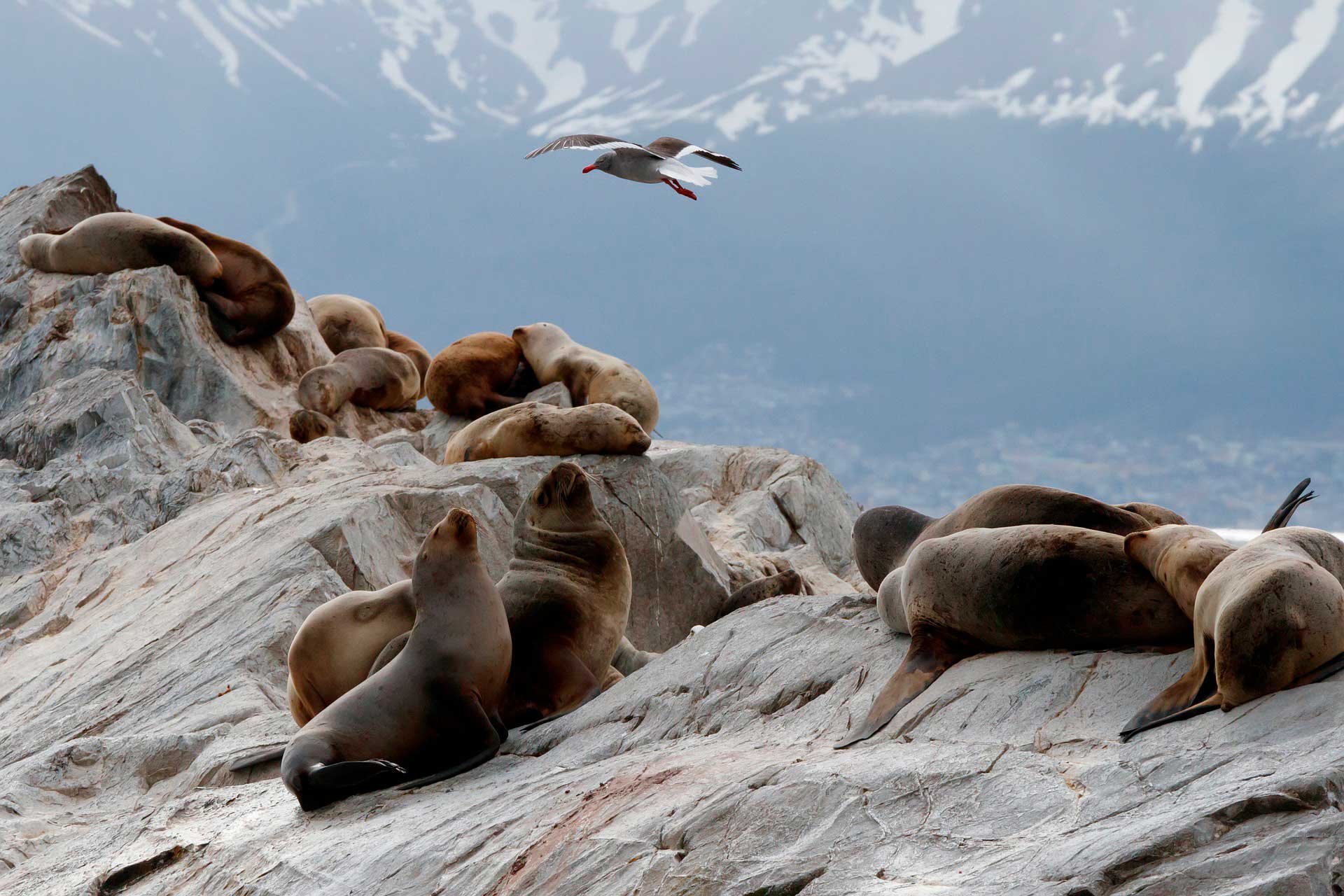
more highlights of argentina
With eight local offices in Latin America, we have the perfect base to help you build the perfect trip for your clients. Unrivaled experience with a wide selection of bed & breakfasts, small posadas, unique boutique hotels and world class luxurious lodging.
